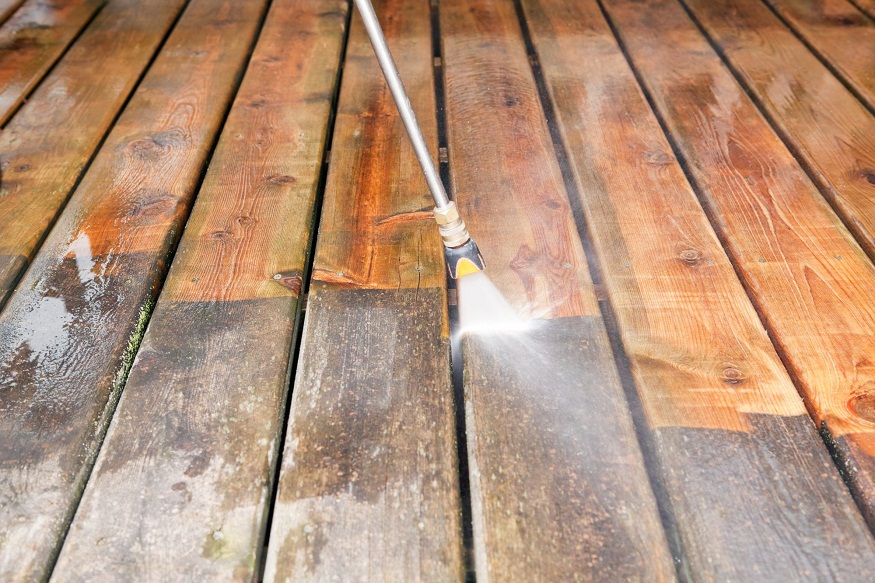The Real Cost of Putting Off Deck Repairs

Everybody knows their deck could benefit from some attention. There is probably some gray on the wooden planks, a few boards that are loose, or areas where the finish has been damaged by the elements. Life gets busy, and the budget for repairs gets tighter, and it is easy to say, “I will fix that next year.”
However, delaying repairs may be more expensive than you would expect.
Deck repairs tend to follow a predictable pattern. A $500 maintenance job can escalate to a $15,000 replacement within three years. Contractors are not trying to take advantage of you; it is simply because wood damage will accelerate when it begins to occur. The good news is that catching the signs of trouble early on will greatly improve your deck’s lifespan and protect your pocketbook.
When Small Issues Become Large Ones
A deck that requires cleaning and sealing is not necessarily hazardous; it simply appears tired. However, once the protective layer wears away, the moisture in the air enters the wood. Moisture is where all the problems begin.
Once the wood absorbs moisture, it swells. When the moisture evaporates, the wood shrinks. This cycle repeats with each rainfall and with each hot sunny day, causing stress cracks in the wood. Those tiny cracks allow additional moisture into the wood, further damaging it.
Over the course of a few seasons, cosmetic issues become structural issues. Boards that were once faded and in need of new finishes split. Joists that were once fine now have soft spots. The railing that felt solid when walked upon now sags and wobbles due to the loss of structural integrity at the base.
When to Get a Pro Involved
Getting a professional to evaluate your deck is a smart idea. Services such as these can determine exactly where your deck falls on the maintenance scale and what specifically it needs — not worst-case scenario, but a genuine evaluation of the deck in its current state and what you can do to help maintain it in the future.
In some cases, it is simply a matter of cleaning and applying a fresh coat of sealant. Companies like Deck Seal offer quality protective sealant that can keep your deck in good condition for many months. In other cases, a few boards will need to be replaced before you apply a protective coating. Regardless, being aware of what you are working with is better than speculating and potentially exacerbating the situation with the wrong method.
The Numbers Matter Most
Let us assign some real numbers to the concept of deck restoration. For example, a standard deck restoration (cleaning, sanding, and reapplying sealant) will typically run between $800-$1500 for the average suburban deck. If you desire to maintain your deck in a clean and protected manner, you can expect to perform this maintenance every 2-3 years.
If you delay performing this maintenance for five years, the price will increase as you are no longer simply maintaining the deck; you are fixing damage. You will have to replace boards and possibly portions of the frame. The overall cost will range between $3000-$5000.
If you continue to delay until structural damage has spread throughout your deck, posts will begin to rot at ground level. The bearers will sag. The ledger board (the part of the deck that is attached to your house) may also need to be repaired. At this point, you are looking at a minimum cost of $8000-$12,000 and potentially higher depending on the extent of the damage.
The Pattern Is Clear
Routine maintenance costs less than deferring repairs, which ultimately costs less than having to replace the deck. It is not rocket science; it is simply common sense.
What Happens to Wood Left Unprotected
Wood does not age well without protection. UV radiation breaks down the lignin that holds wood fibers together. As a result, the surface of the wood becomes rough and splintered.
Moisture Penetration
While UV radiation creates unsightly damage to the surface of the wood, it is the penetration of moisture into the wood that is the greater concern. Once moisture penetrates the wood, decay fungi begin to grow. Fungi consume the wood and weaken its structural integrity.
Decay Fungi Progression
Fungi growth occurs faster in certain areas of the wood than in others. Horizontal surfaces (such as the decking boards) receive the brunt of the weather. Pools of water are detrimental to the wood and create faster deterioration. You may see decking boards that appear fine from above, yet have decay occurring beneath the surface.
Restore Before Damage Spreads
Repairing the damage caused by fungi before it spreads is essential. Restoring the deck allows you to extend the lifespan of the remaining good wood. Additionally, the protective coating will perform properly and provide continued protection to the wood.
Why Professional Help Makes Sense
Many homeowners attempt to perform DIY deck maintenance. While DIY maintenance can be successful, especially if you are able to identify potential issues early on and have knowledge of what you are doing.
The Problem With Poor Preparation and Application
Properly restoring a deck involves more than simply slathering on a coat of stain. Prior to staining, there are specific steps that must be taken to prepare the deck for the coating. Techniques used for cleaning the deck prior to application of the coating are critical to ensure that the coating adheres properly to the wood. Sanding requirements are important to remove imperfections in the wood and to create a smooth surface for the coating to adhere to. Finally, choosing the correct products is vital to ensure that the coating lasts and provides the necessary protection to the wood.
Incorrect application of a coating can cause moisture to be trapped between the coating and the wood. Using the wrong products can create problems for you down the road. Missing spots when applying coatings will leave areas of the wood uncoated and subject to varying degrees of weathering.
Additionally, the time involved in completing a DIY restoration project can be substantial. What can be completed by a professional in a day or two can consume multiple weekends for a homeowner who is learning as he goes along. Moreover, if the outcome of the project is less than desirable, you will have wasted your money on materials and your time, and will likely have to hire a professional to complete the task correctly.
Value in Routine Maintenance
Routine maintenance of a deck is not merely about saving money; it is about preserving a structure that enhances the functionality and enjoyment of your home and lifestyle.
With a well-maintained deck, you can use your outdoor space with confidence. You can host parties and social gatherings. You can relax outdoors. You can allow children to play safely without fear of splinters or weakened areas of the deck. The value of routine maintenance extends beyond the monetary benefits.
Property Value Benefits
In addition to the monetary savings, a deck that is maintained properly is an asset when you sell your home. A deck in disrepair is often a bargaining chip during negotiations for a sale. Buyers will either request a reduction in price for the deck, or request that the cost of repairs to the deck be deducted from the purchase price of the home.
Preventative Maintenance Keeps Your Deck an Asset
By performing routine maintenance on your deck, you are ensuring that your deck remains a valuable asset to your home, as opposed to allowing it to become a liability.
What Works Best in the Long Run
Homeowners that spend the least amount of money on their decks over time are those that never allow a problem to reach crisis levels. They maintain their decks on a scheduled basis. They address minor issues immediately, so they do not become major problems.
You should have your deck evaluated by a professional every couple of years. Clean and seal your deck regularly, prior to the finish failing entirely. Address minor repairs as soon as possible, rather than allowing them to spread and become major problems.
Consistent Maintenance Prevents Major Expenses
Performing consistent maintenance on your deck is essentially investing money into your deck to prevent the expense of major repairs down the road. More importantly, consistent maintenance will enable you to have a deck that you can comfortably use and enjoy.
Most professionals can provide you with a realistic view of what your deck currently requires and the best plan for future maintenance. Some cases may involve only maintenance. Other cases may require repairs. Regardless, you are making educated choices regarding the care of your deck, rather than simply taking a wild guess.
Taking care of your deck does not require anything drastic. Simply, consistent attention to small issues before they


